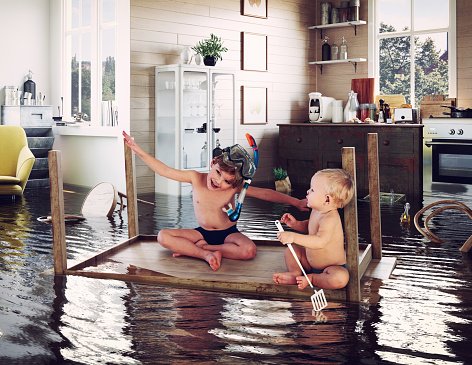The Value of Water Mitigation and Damage Restoration

Water flood damage refers to different potential losses occasioned by water penetrating in places where it may enable attack of airborne microbial processes like rot of wood, mildew growth, corrosion of metal, the growth of mold, swelling of composite woods, et al. These processes damage the underlying structure and lead to a gradual weakening of structures, sometimes leading to total collapse. Thus, damage restoration is essential for all such situations. It is not always possible to spot the damage done, and one has to do extensive repairs after damage has taken place.
Damage restoration services can be availed by contacting your insurance company or any other insurance provider, who may offer specialized restoration services at a reasonable price. Most insurance companies provide damage cleanup as part of their policy, so if you are covered, simply contact your insurance company to discuss on the best way forward. If you are not covered by any insurance, then try to find out whether the damage occurred due to a natural disaster or manmade action. In both situations, damage restoration is essential, as without it, the problem will remain pending.
When damage restoration is essential, the first step is to protect your belongings. Use heavy duty plastic sheets to safeguard delicate items like furniture, appliances, electronics, jewelry, glassware and clothing. Wrap blankets, pillows, bedding and garments in large plastic sheets. Use dry cotton fabric to clean up wet surfaces and put away your belongings in dry areas until everything is completely dry.
For mildew and mold removal, use a diluted chlorine bleach solution for cleaning and for mildew damage restoration, try soot removal products with organic ingredients. You can dilute these chemicals either in water or oil, so that you can apply them with sprayers or spread them with a cloth. Some soot removal products contain ammonia, which can burn your eyes if you do not wear gloves. Before using these chemicals, read their instructions carefully. For more info about these experts, click here.
After damage restoration is complete, your next step should be drying. A regular dehumidifier can be used to reduce humidity in your area. This will also speed up the drying process, so do not skip it. Make sure that you let the area dry in the sun, which may take several days. Depending on the severity of your flooding, you might need to bring a fan in to speed up the drying process.
If you have been hit by hurricanes or natural disasters such as fires, then your main concern is safety and insurance claims management. Most insurance companies offer services and guidelines for property owners who have been impacted by natural disasters. Contact your property owner's insurance company to discuss on the best way to restore your house to its original condition. In most cases, your insurance company can give you a guide on how you can restore your home to its pre-loss condition and keep mold from appearing again. They may even offer tips on how you can prevent the situation from happening again in the future. Find out more details in relation to this topic here: https://en.wikipedia.org/wiki/Smoke.
